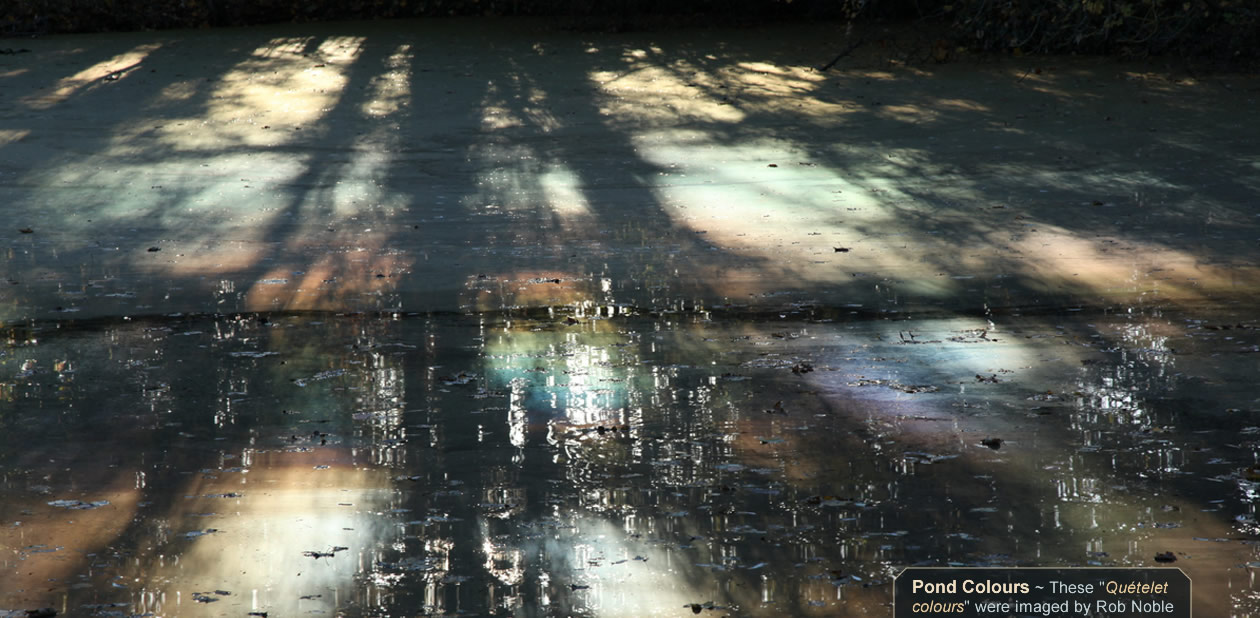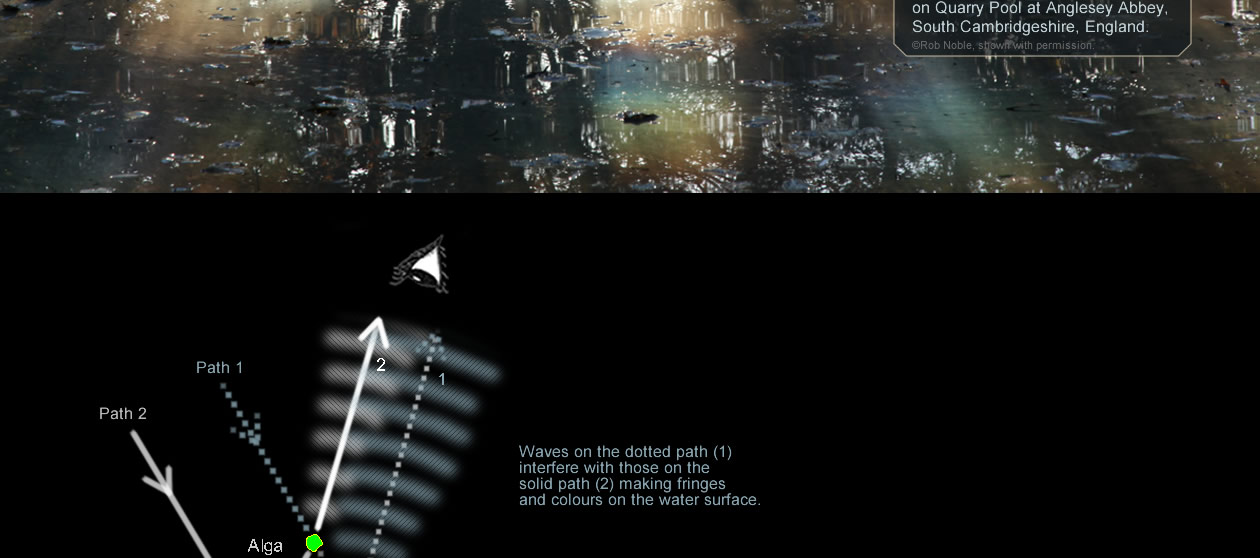 |
||
 |
||
|
| Qu�telet colours (after Adolfe Qu�telet , Flemish scientist 1796 � 1874) are subtle pastel hues on reflecting surfaces. They are comparatively little known. Search for them on still ponds whose surface is covered with algae or has a film of pollen or dust. Partial shading by trees, as here, often helps to make the colours on the sunlit surface more evident. You might also find them on dusty mirrors and windows. They are interference colours but not from thin films. They are instead produced by small particles just above a water or other reflecting surface. Individual particles scatter light waves via two paths: Path 1: Light is scattered first by the particle and some of the outgoing waves are reflected by the water surface Path 2: Light is first reflected by the water surface and is then scattered by the particle. Waves from routes 1 and 2 interfere constructively and destructively. In some directions wave crests from the two routes are in phase and there is then brightness. In directions where the two waves are out of phase there is darkness. The visible result is a set of fringes. Different wavelengths of white light interfere in different directions and this colours the fringes. |
 |
||
 |
||
|

| About - Submit | Optics Picture of the Day | Galleries | Previous | Next | Today |